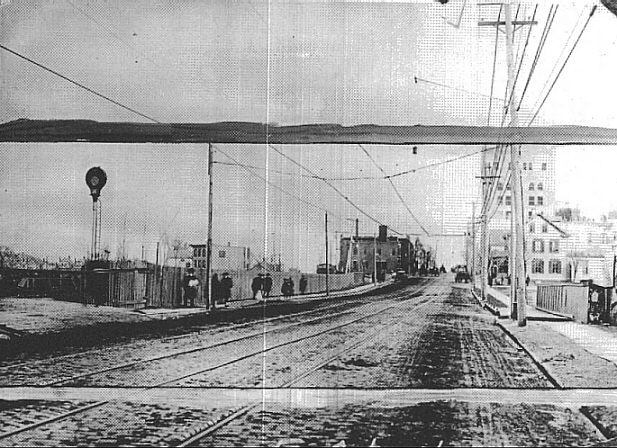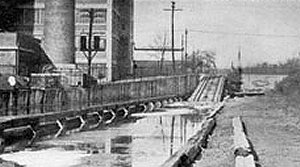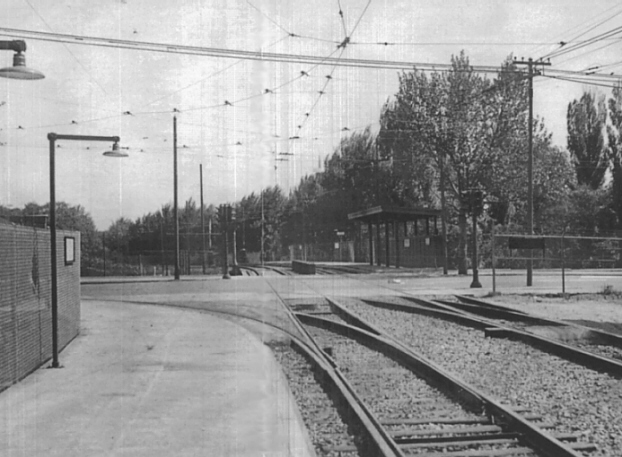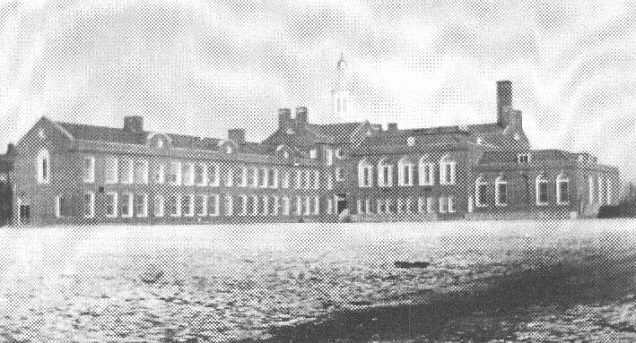
Try to ignore the horizontal cracking in this rare photo of Orange Street at the turn of the 20th Century. This spot marks the street's intersection with the Morris Canal. We are standing in front of the Tung-Sol factory, looking east, toward downtown. The street is still cobbled, and streetcar tracks dominate the thoroughfare.  To the left, running parallel, are the Delaware, Lackawanna & Western
railroad tracks, still running at street level. When the railroad
tracks are lowered in a few years, barge traffic on the canal --
which heretofore has traveled under the railroad and streetcar tracks
-- will then be hoisted and portaged over Orange Street (photo, right,
looking north). The canal was abandoned in 1924 and eventually became
the bed of the City Subway. Just past it, on the right in
the above photo, is the site of the future
Boys' Park, and off to
the left a road would soon be built taking traffic to the Stickel Bridge
and on to Jersey City.
To the left, running parallel, are the Delaware, Lackawanna & Western
railroad tracks, still running at street level. When the railroad
tracks are lowered in a few years, barge traffic on the canal --
which heretofore has traveled under the railroad and streetcar tracks
-- will then be hoisted and portaged over Orange Street (photo, right,
looking north). The canal was abandoned in 1924 and eventually became
the bed of the City Subway. Just past it, on the right in
the above photo, is the site of the future
Boys' Park, and off to
the left a road would soon be built taking traffic to the Stickel Bridge
and on to Jersey City. |

